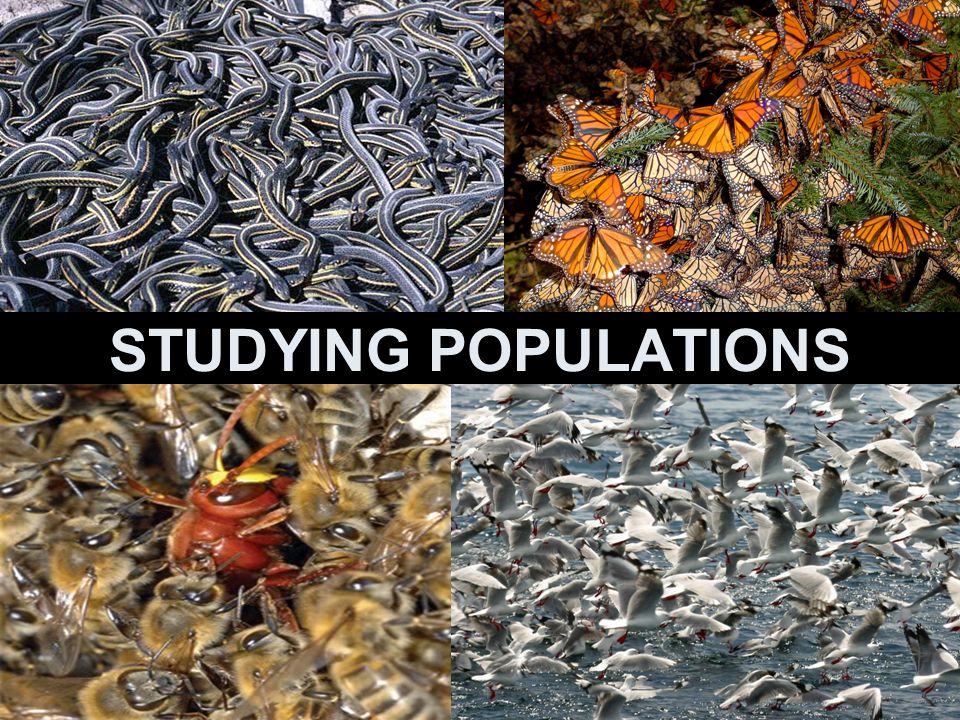Back to: BIOLOGY SS1
Welcome to class!
In today’s class, we will be talking about the basic ecological concept. Enjoy the class!
Basic Ecological Concept

Population studies
A population is defined as the total number of organisms of the same species living together in a given area at a particular time. In any ecosystem, the community is made up of many populations of different species.
The characteristics of the population are:
(a) Population size: The total number of individuals of the same species in the habitat (the total numbers of individuals in a population).
(b) Population density: This is defined as the number of individual organisms per unit area or volume of the habitat.
Mathematically represented as;
Population density = Total population or Population size/Area of habitat
Example: If an area of land of 100m² has an elephant grass population of 1000 plants, the density of elephant grasses will be;
Total number of individuals /Total area i.e 1000/100M²elephant grasses =10 elephant grasses/m²
Population density can be used to estimate the total number of individuals of a population i.e. population size.
(c) Population frequency: This refers to how often the species occurs at different sites in its habitat. It is recorded as the number of times the organism is sited (seen).
(d) Population growth rate: This refers to the total and final effect of birthrate and death rate of organisms in the habitat.
(e) Percentage cover: This is the area of ground or space covered (or occupied) by a given species its habitat. It is expressed in percentage.
(f) Distribution: This refers to how individuals of a particular population are arranged in a given habitat. The individuals may live in clumps, they may be evenly spaced or randomly spaced.
Methods of studying populations

To conduct population studies the following procedure is used;
- Choose the habitat to be studied
- Choose a sampling method
- Identify the species in the habitat
- Collect, count and record the different types of organisms present.
- Repeat the population studies at different periods.
The following methods can be used to study specific populations:
Collection of plants:
(a) Quadrat Sampling: A quadrat is made of a square or rectangular piece of wire, plastic, wood or metal frame A quadrat is used by throwing it over the shoulder at random several times and on each landing, the area covered by it is observed. The type of plant species and their number within the quadrat are recorded.
From the results, the average number of plant per m² is calculated. If the area of the habitat is known, the total number of plants it contains can be estimated.
(b) Transect method: A marked tape is used in this method. The tape is marked at convenient intervals and then stretched across the area to be studied. The plants encountered at the interval marks are counted and recorded. This procedure is repeated a few times.
In this way, a fairly accurate estimate of the number and types of plants in the habitat are obtained.
Collection of Animals:
Animals are more difficult to collect than plants; The following methods can be used.
(a) Capture-Recapture method: In this method, animals of one type in a particular area are caught, counted and marked with ink and released. Their number is recorded as A1. The following day another set is captured and the number recorded as A2. This second batch may include animals which had been caught and marked the previous day, their number is recorded as A3.
The population of animals present in the area is found using a particular formula.
(b) Collection of soil animals with quadrats: The soil animals in an area can be studied by collecting samples of soil from several sites chosen by tossing a quadrat randomly.
Relationship between soil types and water-holding effect of soil on vegetation
Soils with smaller particles (silt and clay) have a larger surface area than those with larger sand particles, and a large surface area allows the soil to hold more water.
In our next class, we will be talking about Ecological Management. We hope you enjoyed the class.
Should you have any further question, feel free to ask in the comment section below and trust us to respond as soon as possible.

I love your scheme and your teachings. Thanks
I love your scheme and lesson note but it’s actually costly to the teachers
lovetheteachings
very cool
so nice
Nice but the explanation is not broad enough
that quadrat sampling
why is it made up of wood, plastic
did not see what i am looking for
I need more explanation
Hello i am new can you put me through